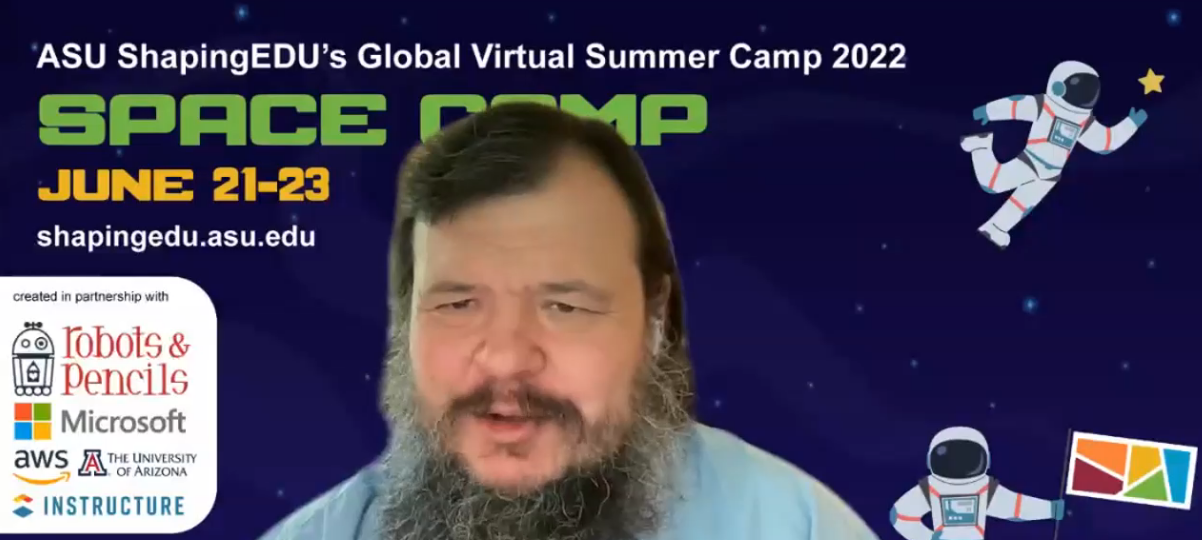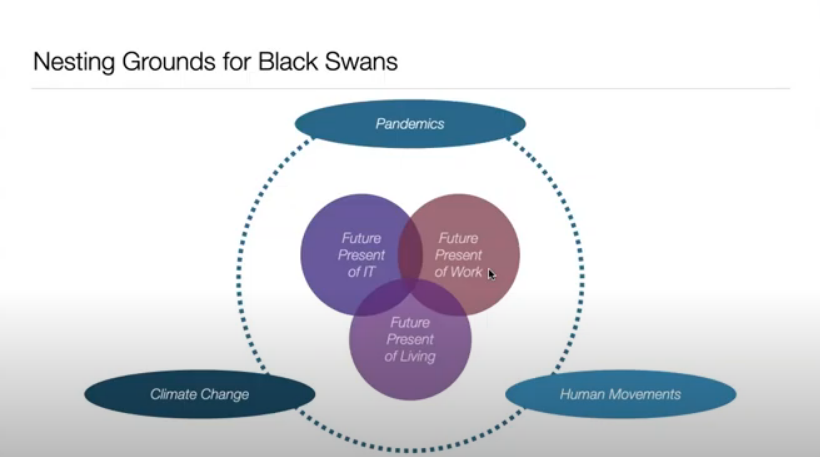
Preparing for the Unknown: 6 Nesting Grounds for Black Swans
Stephanie King
—

How do you watch for something you and your institution can’t even predict is going to show up? During our June 2022 ShapingEDU LIVE: Binoculars for Black Swan Watchers: Where Audubon Meets SETI, host and Innovator in Residence Ruben Puentedura, Ph.D., reminded participants of what Black Swans are, how you and your institution could be impacted by them, and – most importantly – where you can look for these Black Swans lurking in the darkness.
Understanding Black Swan Events
Defining characteristics of Black Swan events are:
- Cannot be predicted ahead of time
- Have a major effect
- Can be rationalized retrospectively
The Titanic sinking is a great example of a Black Swan event.
Once you and your institution experience a Black Swan event, everything changes. There are four key paths when it comes to how you’ll be impacted after a Black Swan event:
- Antifragility: Transition from a Black Swan Event better than you were before it.
- Resilience: Come out of the event much the same way as you came in.
- Near-Term Risk: Emerge wounded with severe damage, but you can keep on existing.
- Existential Risk: The worst outcome, no longer viable.
Being antifragile after a Black Swan Event doesn’t mean that you weren’t hurt like others during the event, but, overall, you come out ahead of where you were, with new practices to be more strategic than before, Puentedura said. “When a Black Swan Event is going to happen, your target is to be antifragile.”
Watch videos in our Black Swan Thinking Project YouTube playlist to learn more about Black Swans.
Unpacking the Impact
If you’re an educator experiencing Black Swan events, ask yourself these questions:
- How do I make this unit of instruction antifragile?
- How do I make this course antifragile?
- How do I make this degree antifragile?
- How do I make this institution antifragile?
- How do I make this student learning antifragile? (The key question at the heart of it all)
Six Nesting Grounds for Black Swans
“You cannot tell when a Black Swan is going to hit you or where it’s coming from, but it is true that you can identify places that are likely to give rise to Black Swans,” said Puentedura. For the past few years, he has been developing a compact list of nesting grounds for Black Swans.
But what defines a Black Swan Nesting Ground? They are not Black Swans, but they have conditions within themselves, and they have interactions that can lead to Black Swans emerging.

Puentedura shared six Black Swan Nesting Grounds:
Systemic Nesting Grounds
Large-scale systems that are going to be with us as definitional large-scale systems through, at least, the end of the century.
1. Pandemics
“We can deal with COVID. We will eventually have a reasonable set of policies, but it keeps mutating, and the trouble isn’t COVID – it is not the only one [pandemic].”
Example: There are many variants of COVID-19 that exist, in addition to malaria and tuberculosis and HIV/AIDS and now Monkeypox.
2. Climate Change
“It’s not a question of something completely new emerging; rather, you’re looking at certain events becoming more frequent and more enhanced than they were before.”
Example: Heat waves happening more at higher temperatures.
3. Human Movements (Migration, refugee movements)
“Yes, you have large-scale migrations, whether it’s for economic reasons or wars or food deprivation. But you also have moves in and out of cities.
Example: Shanghai (in just over 3 decades, Shanghai has increased from 5 million to more than 28 million residents)
Relational Nesting Grounds: More individual, local, and human-direct interaction scale; these have to do more with the day-to-day interaction of people, more affected by agents and networks.
4. Future Present of IT* (Interaction with different features, aspects and tools of IT)
“Social media plays a key role in terms of how people get news. Think of what that does in terms of creating different phenomena – it affects a huge range of possibilities, a huge range of ways to communicate and how and why it’s communicated.”
Examples: AI, automation, robots, social media
5. Future Present of Work*
(What we consider as work, how work takes place, etc.)
“We’re still seeing a shift in work changes due to the pandemic, but what we’re seeing that result in, in terms of hours of work, where people are working, which jobs are in demand, and which are terminated. It’s not as simple as the Great Resignation or all businesses are hiring, all businesses have labor costs that are increasing – it’s a mix."
Examples: The pandemic has changed how and where people work.
6. Future Present of Living*
(How people might choose to live, what is the value of a good life and what they can afford to achieve to get a good life)
“It’s not a question of, it’s all going to be good, it’s all going to be bad, it’s a question of if it’s shifting, if it’s changing, and you need to factor that into the picture.
Examples: How the percentage of the global population performing benevolent acts decreased from 2020 to 2021 and how what they valued increased, like donation and volunteering.
*Future Present = Now and in the future
Once you and your institution know these Nesting Grounds, you can consider:
- What type of resources can I develop?
- What do I need to have on hand?
- What skills should I have?
- How should I reconstruct things?
What’s the answer? Science fiction can help!
During the ShapingEDU LIVE, Puentedura shared a quote by author Miriam Allen deFord: “Science fiction deals with improbable possibilities, fantasy with plausible impossibilities.”
Puentedura explained that it’s that improbable possibility that is exactly where things are at, where things need to be at to start to give us that perspective that allows us to see what’s coming down the road.
Join Puentedura at Global Virtual Summer Camp’s opening keynote on Tuesday, June 21, at 8:15a.m. MST to continue exploring how to use science fiction as a metaphor. Register now for Space Camp!
Watch the ShapingEDU LIVE on Black Swan event nesting grounds:
